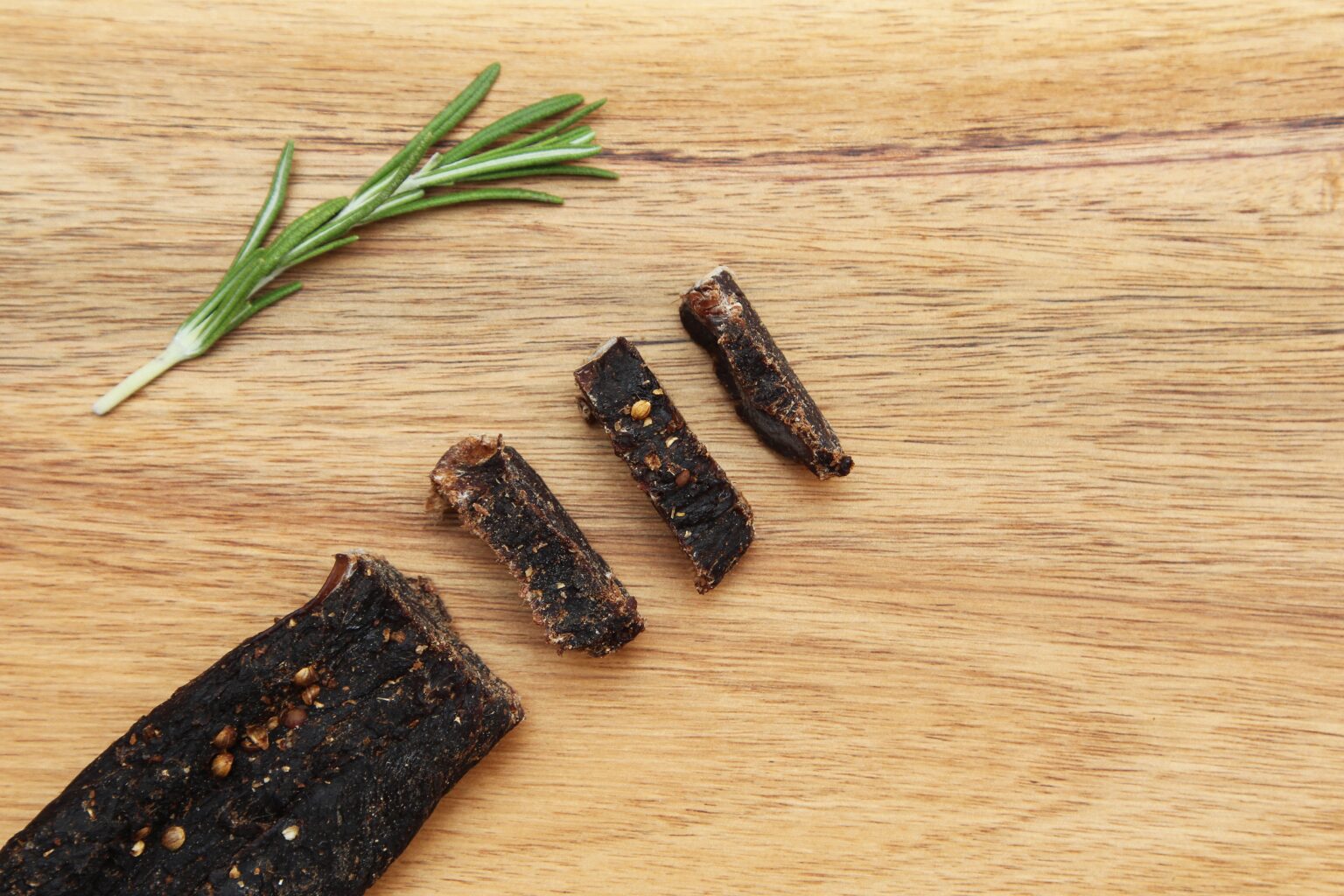When it comes to South African cuisine, there is one delicacy that stands out for its distinctive flavor and texture – Biltong. This dried meat treat has been a favorite in South Africa for centuries and has gained popularity around the world for its unique taste and satisfying chew.
Biltong is often compared to beef jerky, but it possesses its own distinct qualities that set it apart. While both are dried meats, Biltong is typically thicker, more tender, and less sweet than its jerky counterpart. It is made from various types of meat, including beef, game meats like ostrich and venison, and even fish like bokkoms (dried fish).
The process of making Biltong involves marinating strips of meat in a combination of vinegar, salt, and a blend of spices. The traditional spice mix usually includes coriander, black pepper, salt, and sometimes other seasonings like cloves, nutmeg, or chili powder. The marinated meat is then left to dry for several days in a well-ventilated area.
The drying process is a crucial step in achieving the unique texture of Biltong. Traditionally, the meat was air-dried in South African farmhouses, taking advantage of the warm and dry climate. Nowadays, modern methods like using dehydrators or specialized drying rooms are also employed to ensure the meat is dried thoroughly while maintaining its tenderness.
The result is a chewy, yet succulent, meat snack that offers a truly satisfying eating experience. The texture of Biltong is often described as firm, yet easy to bite into. The slices of meat have a slight resistance when chewed, releasing their flavors gradually, allowing you to savor the taste.
One of the key factors contributing to the unique texture of Biltong is the balance between moisture and dryness. The meat is dried enough to preserve it but still retains a certain level of moisture that keeps it tender. This contrast of textures creates a delightful sensation in the mouth, as the flavors unfold with each bite.
The flavor profile of Biltong is another aspect that makes it a beloved delicacy. The blend of spices used in the marinating process infuses the meat with a rich and savory taste. The coriander adds a distinct herbal note, while black pepper contributes a hint of heat. The salt acts as a preservative and enhances the flavors of the spices. Together, they create a mouthwatering combination that keeps you coming back for more.
Biltong is not just a tasty snack; it also offers several advantages. It is a high-protein food, making it a great choice for those looking to increase their protein intake. It is also low in carbohydrates and contains essential nutrients such as iron, zinc, and B vitamins. Moreover, Biltong does not require refrigeration, making it a convenient and portable snack for outdoor activities or on-the-go snacking.
In South Africa, Biltong is not only enjoyed as a snack but also as a versatile ingredient in various dishes. It can be used as a topping for salads, a filling in sandwiches, or even incorporated into stews and soups to add depth of flavor. Its versatility and unique texture make it a favorite among South Africans, who often celebrate its cultural significance during social gatherings and sporting events.
In conclusion, experiencing the unique texture of South African Biltong is a delight for food enthusiasts seeking something distinctive and flavorful. Its tender, chewy texture combined with the savory blend of spices creates an experience that is both satisfying and memorable. Whether enjoyed as a snack or used in culinary creations, Biltong showcases the rich culinary heritage of South Africa and its ability to elevate dried meat into a culinary art form.








